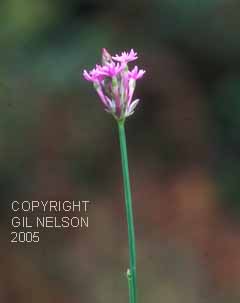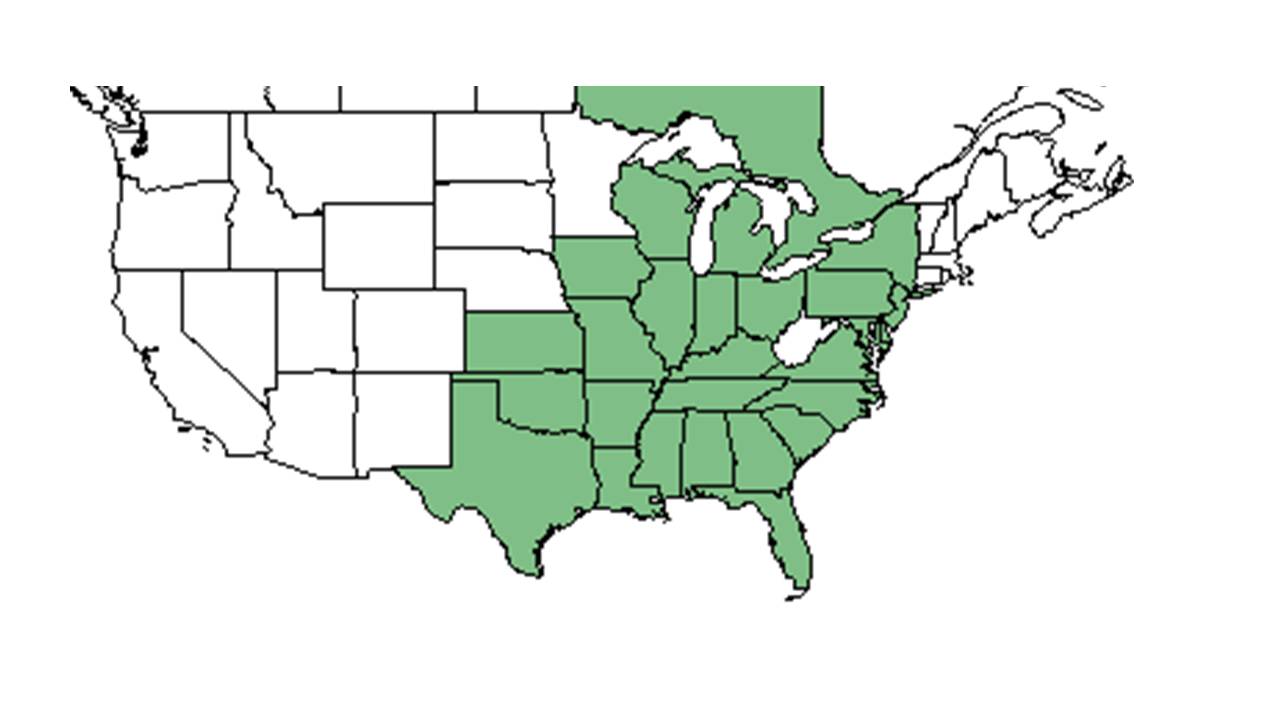Polygala incarnata
| Polygala incarnata | |
|---|---|

| |
| Photo taken by Gil Nelson | |
| Scientific classification | |
| Kingdom: | Plantae |
| Division: | Magnoliophyta – Flowering plants |
| Class: | Magnoliopsida – Dicotyledons |
| Order: | Polygalales |
| Family: | Polygalaceae |
| Genus: | Polygala |
| Species: | P. incarnata |
| Binomial name | |
| Polygala incarnata L. | |

| |
| Natural range of Polygala incarnata from USDA NRCS Plants Database. | |
Common names: Procession flower, Pink milkwort
Contents
Taxonomic notes
Synonym: Galypola incarnata (Linnaeus) Nieuwland
Description
"Herbs, whorled or alternate rarely opposite, entire leaves. Flowers lavender, pink, white or yellow, in racemes or spikes, terminating the branches or in terminal corymbs. Flowers perfect, zygomorphic, with 3 small sepals, frequently one of these slightly larger than the others, and 2 larger petaloid sepals (wigs). The 3 petals are united into a tube, 3-lobed at apex, the 2 lateral lobes usually the longer, the center lobe usually lacerate, often thicker in texture; stamens 6-8, united to the corolla tube in 2 rows. Capsule 2 –locular, with one seed in each locule. Seeds dark brown or black, ellipsoid or ovoid, rarely globose, 0.5-3 mm long, usually densely pubescent. The genus has been divided into several genera none of which have distinct characteristics. Orange flowers turn pale yellow on drying, yellow ones bluish green; the pink or lavender ones remain the same color or fade slightly." [1]
"Glabrous, glaucous annual. Stems strict to slightly branched, the cotyledons often present at flowering time. Leaves fleshy, alternate, linear, 5-17 mm long, setaceous or sharply acute. Flowers in spike or racemes; pedicels 1 mm or less long or absent. Sepals ca. 1 mm long, pink, acute or acuminate, wings similar but larger, 2.5-3 mm long, oblanceolate, pink; corolla tube reddish pink, prominently fringed, 5-6.5 mm long; stamens 8. Seeds black, 1-1.7 mm long; aril confined to base, lobe 1, scarcely projecting." [1]
Distribution
Ecology
Habitat
This species has been found in longleaf pine flatwoods, near sphagnum filled boggy areas, and savannas in drying and moist loamy sands of well drained uplands. [2] It has also been found in the sand pine scrub of Ocala National Forest.[3]P. incarnata has also been seen growing in disturbed habitats such as raked fire breaks of upland longleaf pine-wiregrass communities at Pebble Hill Plantation. [4] Associated species include longleaf pine and wiregrass. [2]
Phenology
This species has been observed flowering from April to July and in September with peak inflorescence in May.[2][5]
Fire ecology
It occurs in areas that are on frequent burn intervals. [2]
Conservation and management
Cultivation and restoration
Photo Gallery
References and notes
- ↑ 1.0 1.1 Radford, Albert E., Harry E. Ahles, and C. Ritchie Bell. Manual of the Vascular Flora of the Carolinas. 1964, 1968. The University of North Carolina Press. 658. Print.
- ↑ 2.0 2.1 2.2 2.3 Florida State University Robert K. Godfrey Herbarium database. URL: http://herbarium.bio.fsu.edu. Last accessed: June 2014. Collectors: Loran C. Anderson, R. A. Norris, Rodie White, R. Komarek, R. F. Doren, Robert K. Godfrey, and M. Davis. States and Counties: Florida: Jefferson, Wakulla, and Washington. Georgia: Grady and Thomas.
- ↑ Cite error: Invalid
<ref>tag; no text was provided for refs namedGreenberg 2003 - ↑ DiSabatino, Dante G. 2015. Personal observation at Pebble Hill Plantation, Grady County, GA
- ↑ Nelson, G. PanFlora: Plant data for the eastern United States with emphasis on the Southeastern Coastal Plains, Florida, and the Florida Panhandle. www.gilnelson.com/PanFlora/ Accessed: 12 DEC 2016